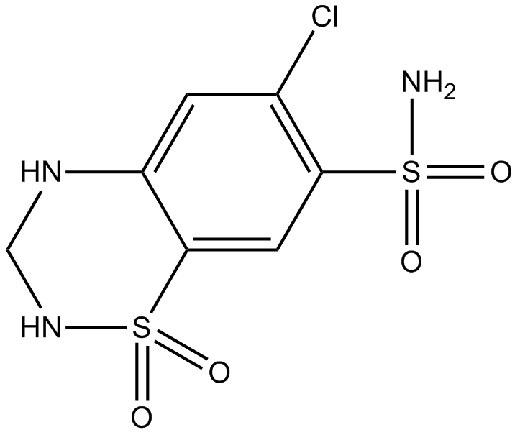

Hydrochlorothiazide
API’s Name:Hydrochlorothiazide
CAS No.:58-93-5
Indication:Diuretics
Innovator:
Specification:USP/EP/CEP
US DMF:16750
EU DMF:√
CEP:CEP 2006-011
Intermediates
Product Detail
Description
Hydrochlorothiazide (HCTZ), an orally active diuretic drug of the thiazide class, inhibits transforming TGF-β/Smad signaling pathway. Hydrochlorothiazide has direct vascular relaxant effects via opening of the calcium-activated potassium (KCA) channel. Hydrochlorothiazide improves cardiac function, reduces fibrosis and has antihypertensive effect.
Background
Hydrochlorothiazide is a diuretic drug of the thiazide class.
In Vitro
Hydrochlorothiazide belongs to thiazide class of diuretics. It reduces blood volume by acting on the kidneys to reduce sodium (Na) reabsorption in the distal convoluted tubule. The major site of action in the nephron appears on an electroneutral Na+-Cl co-transporter by competing for the chloride site on the transporter. By impairing Na transport in the distal convoluted tubule, hydrochlorothiazide induces a natriuresis and concomitant water loss. Thiazides increase the reabsorption of calcium in this segment in a manner unrelated to sodium transport. Additionally, by other mechanisms, Hydrochlorothiazide is believed to lower peripheral vascular resistance.
Hydrochlorothiazide (HCTZ; orally bygavage; 12.5 mg/kg/d; 8 weeks) has improved cardiac function, reduced cardiac interstitial fibrosis and collagen volume fraction, decreased expression of AT1, TGF-β and Smad2 in the cardiac tissues in adult male Sprague Dawley rats. In addition, hydrochlorothiazide reduces plasma angiotensin II and aldosterone levels. Furthermore, hydrochlorothiazide inhibits angiotensin II-induced TGF-β1 and Smad2 protein expression in the neonatal rat ventricular fibroblasts.
Chemical structure


